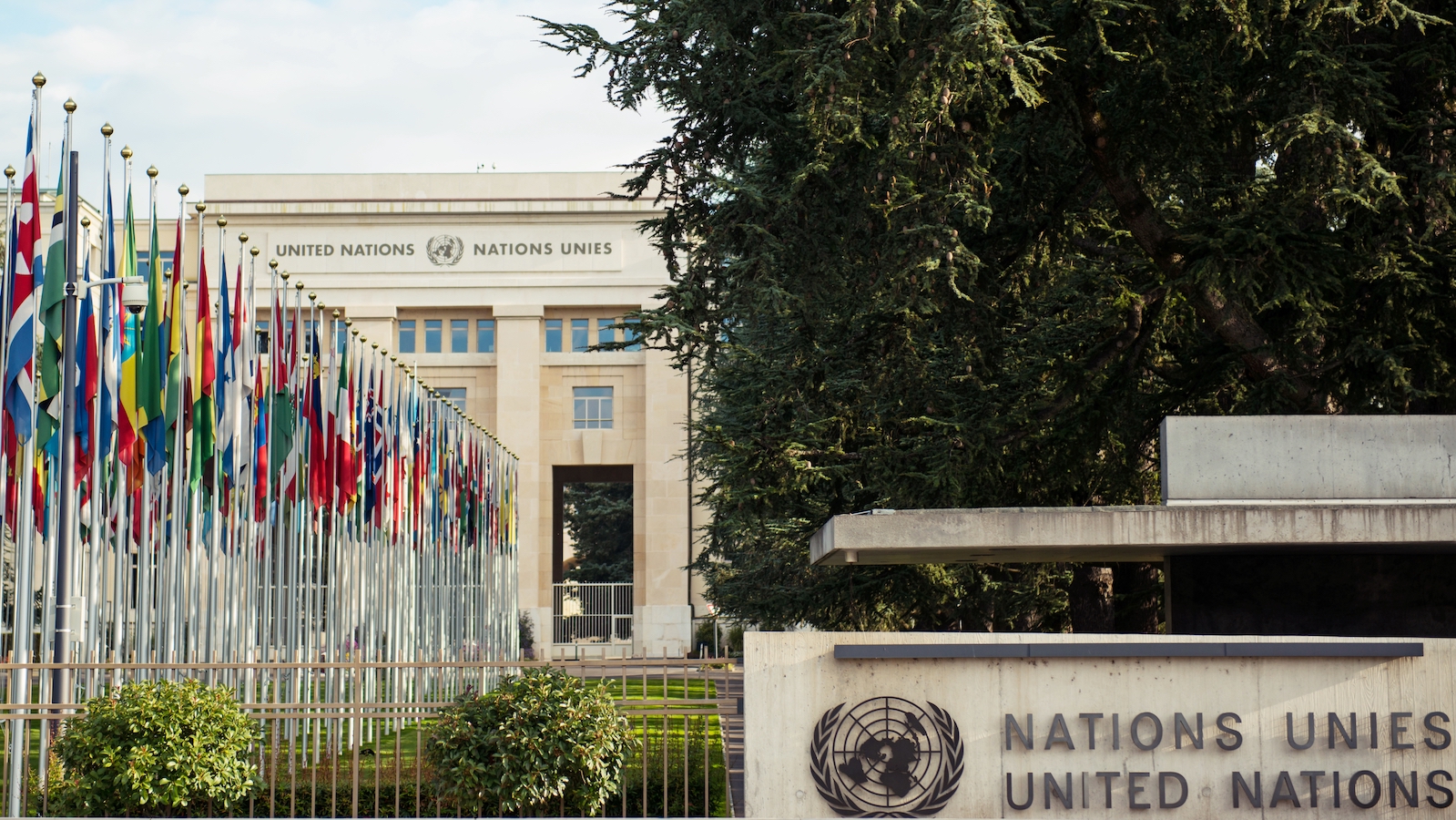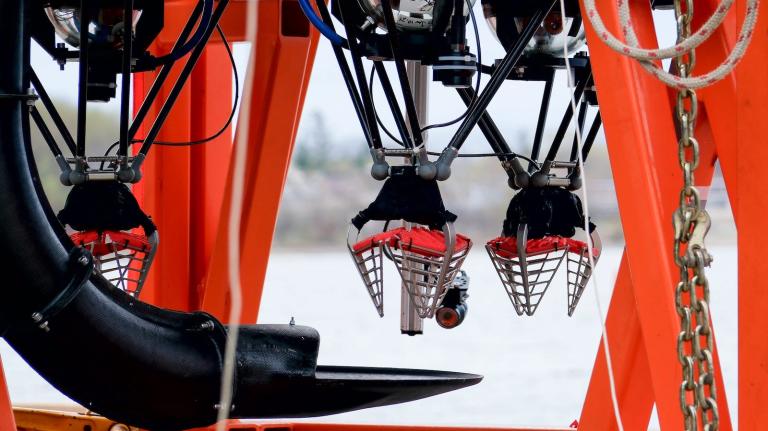Roberto Borrero will never forget standing in the United Nations General Assembly on the day that countries voted to approve the Declaration on the Rights of Indigenous Peoples. It was September 13, 2007, in New York City, and Borrero had spent years roaming those halls on behalf of the International Indian Treaty Council, urging country representatives to adopt the new human rights standard.
As he watched his fellow Indigenous advocates hugging one another and celebrating, he thought of how many times their peoples had been denigrated as savages and animals. Here was a new standard enshrining Indigenous rights as human rights. “The world is finally looking at Indigenous peoples as humans,” he thought.
The vote was a pivotal point for Indigenous advocacy. For decades, people like Borrero had turned to the United Nations to hear their pleas when colonial governments refused to do so.
Today, nearly two decades after that vote, Borrero senses Indigenous peoples are approaching another critical moment.
World leaders are pledging hundreds of billions of dollars to address climate change. At least 190 countries have committed to conserving 30 percent of the world’s lands and waters by 2030. Once again, Native advocates are flying to New York and Geneva to ensure that their voices are heard and their peoples’ rights and territories are respected. But increasingly, Borrero and other advocates have been unnerved by one particular acronym that keeps popping up in multilateral discussions: IPLC, which stands for Indigenous peoples and local communities.
If you study international conservation, you may have seen it before. It pops up in treaties, in scholarly works, in studies about what lands Indigenous peoples own and what solutions exist to climate change. It’s a phrase that seems to have originated in conservation treaties, but advocates like Borrero are noticing it more often across various international venues.
It sounds innocuous, but to Borrero it feels insidious. Indigenous people have spent decades fighting for their rights and recognition. To him, lumping them in with the very broad, amorphous term “local communities” threatens to roll back the progress that they have made.
It’s one thing for state governments to be expected to get the consent of Indigenous peoples before carving out a new protected area. It’s quite another if states can say that they need “IPLC” consent and can argue that local communities’ support outweighs Indigenous opposition, effectively drowning out the voices of Native peoples and diminishing their rights.
Supporters of linking the two say doing so doesn’t diminish Indigenous rights, but Borrero and others who have seen their land stolen and communities decimated are bracing themselves for the worst.
“You’re really setting up a possibility for one of the biggest land grabs since colonization, since the beginning of colonization,” he said. “That’s what we’re raising the alarm about.”
He’s far from the only one doing so. Last summer, three United Nations bodies spoke out against the term: the Permanent Forum on Indigenous Issues, an advisory body to the Economic and Social Council; the Special Rapporteur on the Rights of Indigenous Peoples, who promotes Indigenous rights and analyzes rights violations; and the Expert Mechanism on the Rights of Indigenous Peoples, a subsidiary to the Human Rights Council that conducts studies to help state governments meet the goals of the Indigenous rights declaration.
“We, the U.N. mechanisms of Indigenous peoples, urge all U.N. entities in their methods of work to refrain from conflating, associating, combining, or equating Indigenous peoples with non-Indigenous entities, such as minorities, vulnerable groups, or ‘local communities,’” they wrote.
“We further request that all U.N. member-state parties to treaties related to the environment, biodiversity, and climate cease using the term ‘local communities’ alongside ‘Indigenous peoples,’ so that the term ‘Indigenous peoples and local communities’ is no longer used.”
Not everyone agrees. In a meeting of United Nations working groups in Geneva last September, Borrero listened as Daniel Mukubi Kikuni, a representative for a group of African nations, argued that linking Indigenous peoples with local communities in conservation treaties is necessary for achieving biodiversity objectives.
Kikuni is the head of the Office of Biodiversity Conservation at the Ministry of the Environment and Sustainable Development in the Democratic Republic of the Congo. He’s one of the main negotiators at the United Nations for the Congo on climate change and conservation issues.
He said in an interview that in Africa, it’s difficult to separate Indigenous peoples from local communities. In his mind, they have the same rights. “To separate them is like to have an elephant without ivory,” he said. “There is no elephant without ivory.”
He sees this work well in the Okapi Wildlife Reserve in the Congo, where he said Indigenous Mbuti and Efe are mainly hunters while local community members are mainly farmers. The communities rely on each other, trading bushmeat and farm products. It’s this kind of mutual reliance that makes him think the two can’t be separated.
“At the global level, we have shown that the two are linked and contribute immensely to achieve our goals and targets,” he said.
But not all local communities have strong connections with the land. In other countries, local communities may be equated with civil society in general, said Borrero. And the potential for tension between the two is what’s causing Indigenous advocates to be concerned.
Few people know this as well as Andrea Carmen, who has led the International Indian Treaty Council for the last 30 years. The organization was founded 50 years ago at Standing Rock in the wake of numerous protests in the 1970s to raise awareness of Native rights. Frustrated by North American governments and their lack of response to Indigenous issues, thousands gathered in solidarity and decided to take their voices to the international arena.
Carmen joined the organization in the 1980s, pushing for the Declaration on the Rights of Indigenous Peoples, and raising two children and grandchildren in the process of trying to get the declaration approved. She said that in the countless meetings she attended about the writing of that declaration, no one ever suggested that it be called the rights of “Indigenous peoples and local communities.”
She said the first time she came across the linking of the two was at the 1992 United Nations Convention on Biological Diversity. The conservation treaty, signed by nearly 200 countries (excluding the United States), was a commitment by countries to recognize the importance of conserving biological diversity. In Article 8(J), the treaty acknowledges “the close and traditional dependence of many Indigenous and local communities embodying traditional lifestyles on biological resources.”
At the time, the fact that countries were recognizing the value of Indigenous peoples at all was significant. But the wording still raised red flags, said Nicole Schabus, a law professor at Thompson Rivers University in Canada.
Schabus said that in international negotiations, single words or even letters — such as the word “people” versus “peoples” — carry major implications. United Nations documents used to refer to Indigenous populations, which she said implied, “‘Let’s look at the problem of Indigenous populations being so poor, how can we help?’ Not, ‘Let’s look at Indigenous peoples and how can they have standing and be empowered?’”
In recent decades, Indigenous advocates like Borrero and Carmen have been lobbying international organizations to use the term “Indigenous peoples.” The term “peoples” suggests that Indigenous groups have a defined identity with the right to self-determination, instead of just being another population or community.
In 2014, they found success at the U.N. Convention on Biological Diversity, where parties agreed to add the word “peoples” to future writings, using the term “Indigenous peoples and local communities.” But the countries involved also made clear that they weren’t changing their legal obligations under the 1992 agreement. And still, the linking of Indigenous peoples with local communities rankled Native advocates.
“‘IPLC’ is problematic, because it implies Indigenous peoples and local communities, they’re all the same. They’re not,” Schabus said. In international law, Indigenous peoples have different rights and standing from local communities. Local communities may be knowledge holders, but they don’t have the same rights laid out in the Declaration on the Rights of Indigenous Peoples. They don’t have their own declaration of rights.
“It’s important to keep those terms and concepts separate,” Schabus said. Part of the problem is that there’s a lot of confusion about what “local communities” means.
There’s ambiguity around both terms, but there’s much more clarity around what makes someone Indigenous, according to Elissavet Tsioumani, an international legal scholar at the University of Trento in Italy. Indigenous peoples are generally considered to have some connection to pre-colonial cultures and land bases and to have the right to determine their national identity. There’s also a growing body of international law around the rights of Indigenous peoples, such as the right to free, prior, and informed consent to projects on their lands.
Local communities don’t explicitly have that same right. At the same time, there’s often conflict between local communities and Indigenous peoples, said Galina Angarova, former executive director of the Indigenous advocacy group Cultural Survival.
“In many cases around the world, local communities actually represent the mainstream society,” she said, adding their interests may be in direct opposition to Indigenous peoples especially when it comes to resources and territorial claims.
To Monica Magnusson, an attorney and human rights advocate in Belize, the issue is not theoretical. She’s a member of Laguna, a community of Maya people in southern Belize.
For years, her community has fought for recognition of their ancestral ties to territories in Belize. They won a major victory in 2015 at the Caribbean Court of Justice affirming their land claims. But she said the Belize government still resists granting the Laguna people rights to their territories.
Magnusson thinks acronyms like IPLC give state governments an excuse to diffuse Indigenous rights.
Local communities and Indigenous peoples might have some similarities, she said, and local communities should be free to organize and advocate for their own rights. But any reference to Indigenous peoples should recognize their distinct rights and not conflate them with another group.
“What’s being created here in these spaces are policies and protocols that will have a direct impact on Indigenous peoples’ lands and resources,” she said. “For governments like Belize, who already don’t want to acknowledge the rights we have, they’re going to jump at any opportunity to water it down.”




